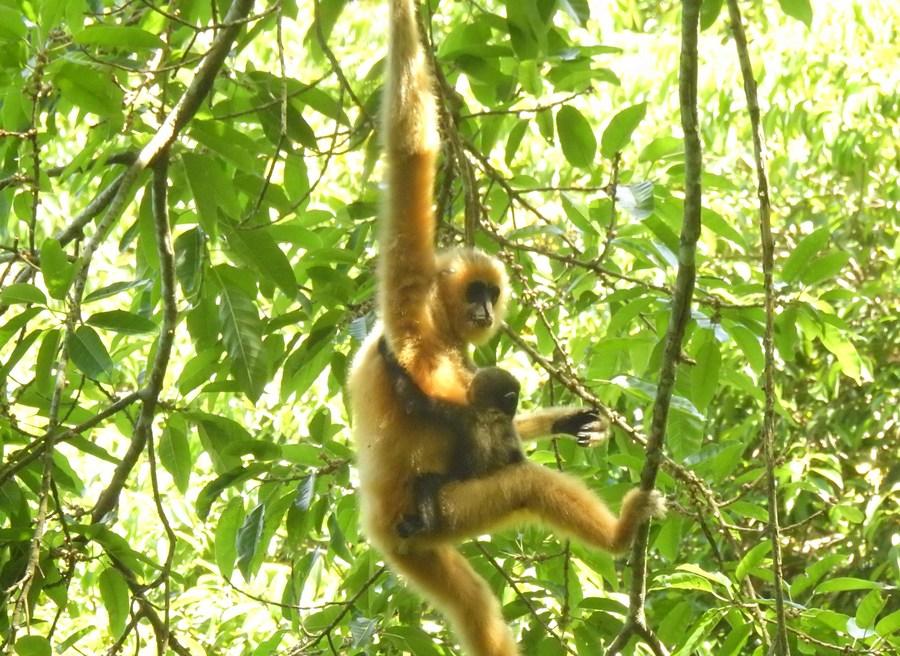National park construction helps rare gibbon population climb
 0 Comment(s)
0 Comment(s) Print
Print E-mail Xinhua, December 19, 2022
E-mail Xinhua, December 19, 2022

Every morning in the lush green mountains in the Bawangling area of the National Park of Hainan Tropical Rainforest, choruses of whistles ring to awaken the primeval rainforest in China's tropical island province of Hainan.
It's the songs of the Hainan gibbons, who live in rainforest trees over 10 meters tall and rarely set foot on the ground. The black-crested apes can only be found in the Bawangling area.
Known as the world's rarest primate, the Hainan gibbons have been listed as critically endangered by the International Union for Conservation of Nature.
Numbering over 2,000 in the 1950s, the Hainan gibbons' population plunged to about seven in the 1980s, due to excessive hunting and lumbering, which pushed them to the brink of extinction.
"We have long been taking a variety of measures to help their population increase," said Huang Jincheng, former director of the administration of the National Park of Hainan Tropical Rainforest.
Conservation efforts have seen positive results in recent years. According to the latest official figures, the gibbon population in Hainan is currently estimated at 36 individuals living in five family groups, from 30 in four groups in 2019.
The increase in gibbon population comes as China enhances efforts to construct the National Park of Hainan Tropical Rainforest, of which the Bawangling area is a part.
The national park, covering 4,269 square km, is home to China's most concentrated and well-preserved tropical rainforests. Many wildlife that had long disappeared are returning to their homes thanks to the park.
In recent years, Hainan has promoted the construction of the park, strengthened the restoration of tropical rainforests, and carried out ecological relocation projects in core protected areas, such as planting more trees to provide food for the Hainan gibbons.
For the gibbons, protection efforts include strict law enforcement, which targets illegal activities such as poaching, Huang said.
"We have also conducted field surveys to monitor the status quo of the gibbons," Huang said. "In addition, we restored their habitat and increased plants that suit the gibbons' diet."
A research center has also been established, with experts from home and overseas jointly providing suggestions for their protection, Huang added.
The population of the gibbons is expected to hit between 60 and 70 in 2035, as long as current protection efforts and environmental stability can be sustained, according to a report jointly released by the Hainan Institute of National Park and the Forestry Department of Hainan Province.






Go to Forum >>0 Comment(s)